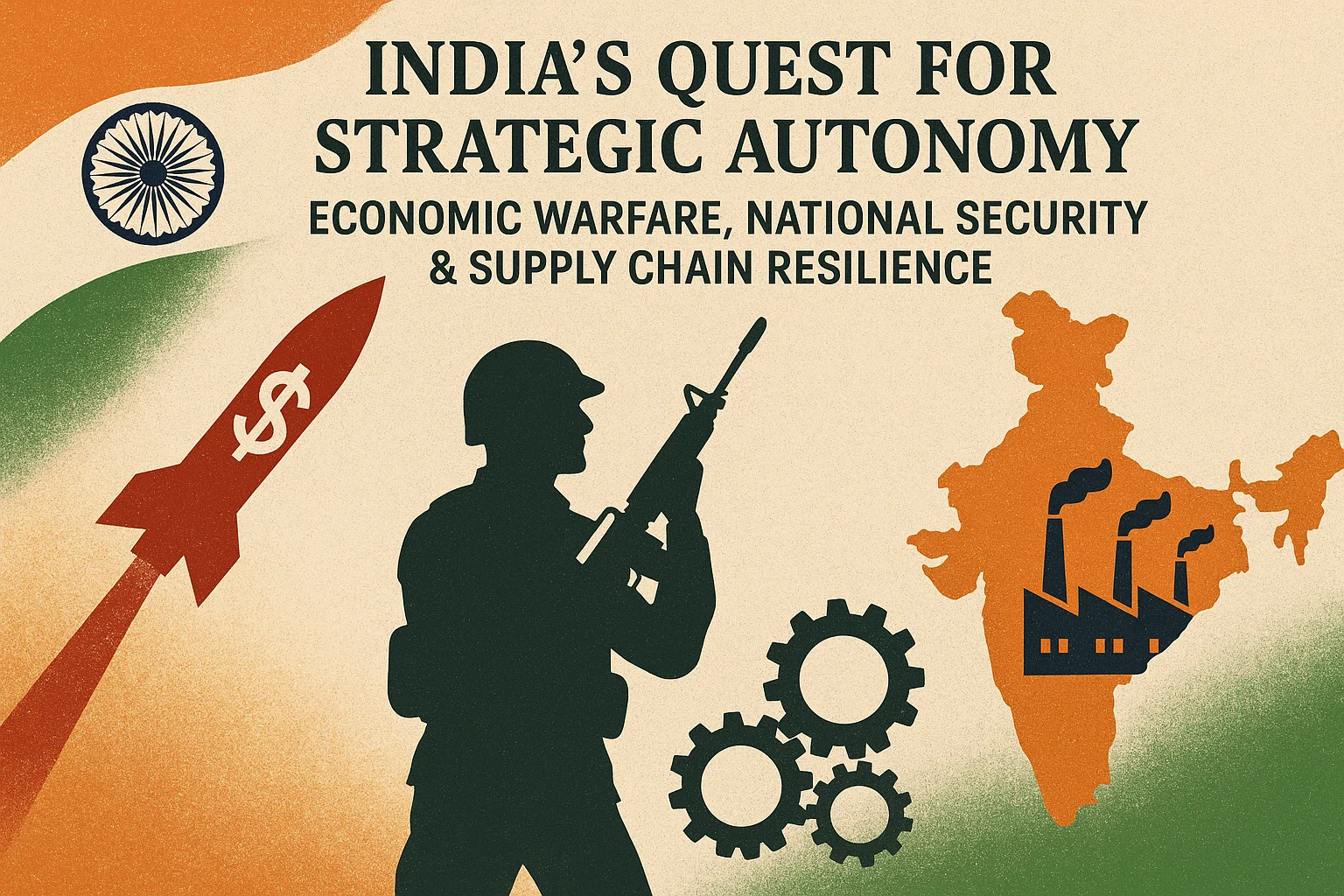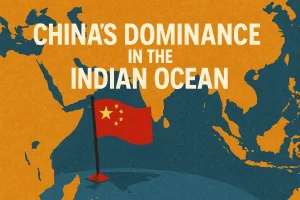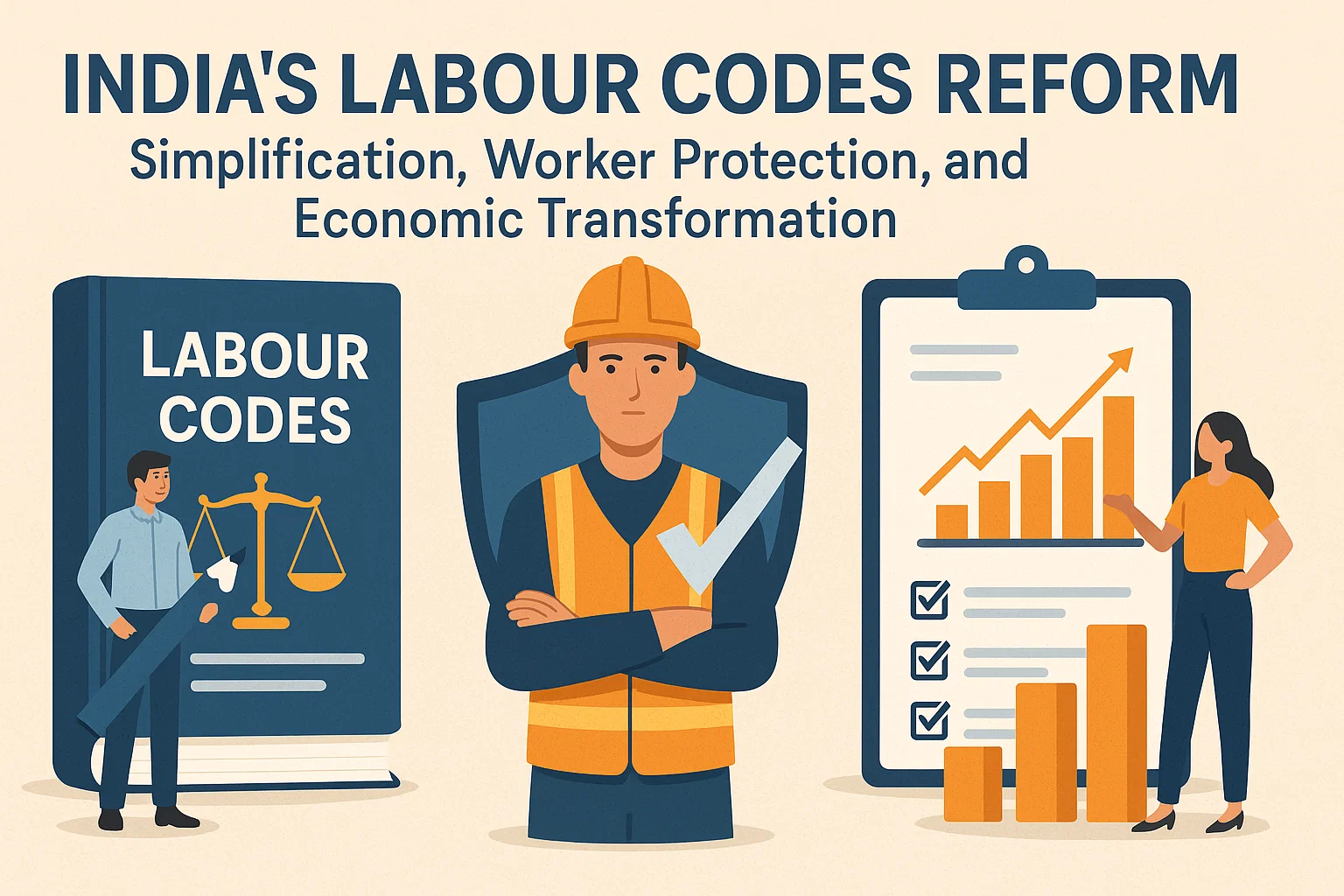India’s Quest for Strategic Autonomy – Economic Warfare, National Security & Supply Chain Resilience
Explore how India is strengthening its strategic autonomy amid rising global economic warfare. Learn about modern tools of economic coercion—sanctions, supply chain weaponisation, energy coercion—and how India can build resilience through technological self-reliance, defence indigenisation, strategic monitoring, secure supply chains, and financial sovereignty.
India’s Strategic Autonomy in the Age of Economic Warfare
In the 21st century, the nature of conflict has evolved beyond traditional military confrontation. Globalisation has created an economic warfare which directly targets a country’s economic core. For a rising economic power like India, understanding and building resilience against these tools is not just an economic imperative but a fundamental national security challenge.
What is economic warfare?
- Economic warfare is the use of economic means as instruments of national power to coerce, weaken, or destabilise an adversary state, while simultaneously strengthening one’s own position.
- It is a strategy of statecraft aimed at achieving geopolitical objectives by targeting an opponent’s economy, rather than engaging in direct armed conflict.
- Historically manifested as naval blockades or strategic bombings of industrial hubs, modern economic warfare employs more sophisticated tools like targeted financial sanctions, export controls on critical technologies, and the deliberate disruption of global supply chains.
What constitutes economic warfare?
Modern economic warfare constitutes a multi-pronged arsenal focused on leveraging interdependence as a vulnerability:
- Weaponisation of Supply Chains: Deliberate actions to disrupt an adversary’s access to critical goods. Examples include China’s restriction of Rare Earth Elements to Japan (2010), Houthi attacks on Red Sea shipping lanes, and the US-China “chip war” involving export bans on advanced semiconductors and manufacturing equipment.
- Financial Sanctions and Blockades: Using control over the global financial infrastructure to isolate a target. This includes freezing foreign assets, cutting off access to systems like SWIFT (as done to Russian banks), and imposing secondary sanctions on entities that trade with the target nation.
- Energy Coercion: Using control over energy resources as a political tool. Historical examples include the 1973 Arab Oil Embargo, and contemporary instances include Russia using gas exports via pipelines like Nord Stream as leverage over Europe.
- Control over Critical Minerals: Dominating the supply of minerals essential for future technologies (like lithium, cobalt, and rare earths for renewables and EVs) to create strategic dependencies and potential chokeholds. China’s dominance in rare-earth refining is a prime example.
How can it affect different sectors of the economy?
Economic warfare can cripple multiple sectors of a national economy:
- Defence and High-Tech Manufacturing: Denial of critical components like semiconductor chips, aero-engines, and sensors can halt production of advanced military hardware and civilian technology, compromising national security and economic competitiveness.
- Energy Security: Disruption in energy supplies (oil, gas) or price volatility engineered by adversaries can lead to inflation, slow down economic growth, and create public unrest.
- Agriculture and Pharmaceuticals: Dependence on imported fertilisers (chemicals) and pharmaceutical intermediates can threaten food security and public health if supplies are weaponised.
- Financial Sector: Being cut off from global payment systems like SWIFT can freeze international trade, cause currency collapse, and lead to a flight of capital and investment.
- Logistics and Trade: Reliance on foreign-owned shipping and vulnerability to maritime chokepoints (like the Strait of Malacca) can disrupt a nation’s entire import-export economy, raising costs and causing shortages.
How can India upgrade its security architecture to address economic warfare?
India needs to integrate economic security directly into its national security architecture:
- Institutional Reform: Establish a National Economic Security Council (NESC) under the National Security Council Secretariat (NSCS) to centrally coordinate and integrate economic threats into security planning.
- Wargaming Economic Scenarios: Incorporate scenarios of economic warfare (e.g., sanctions, supply chain disruptions) into military and strategic wargaming exercises conducted by the armed forces and think tanks.
- Strategic Monitoring Unit: Create a dedicated unit within the NESC to monitor global economic threats in real-time, such as shipping incidents, new export controls, and financial anomalies.
- Cyber Security for Critical Infrastructure: Conduct regular cyber vulnerability assessments for critical economic infrastructure like ports, power grids, stock exchanges, and payment systems.
What measures can be further taken to enhance India’s strategic autonomy?
Beyond architectural upgrades, India must pursue proactive policies:
- Accelerate Technological Self-Reliance: Increase R&D spending to 2% of GDP, focus on dual-use technologies, and aggressively implement the PLI schemes and the Semiconductor Mission to build domestic capacity in critical sectors.
- Diversify and Secure Supply Chains: Deepen partnerships like the Minerals Security Partnership (MSP), secure bilateral agreements for critical minerals, and build strategic reserves for energy and key raw materials.
- Build Financial Resilience: Accelerate the internationalisation of UPI and RuPay, and co-develop an alternative to the SWIFT payment system with strategic partners to insulate from financial coercion.
- Boost Defence Indigenisation: Strictly adhere to timelines for the Positive Indigenisation Lists, and create a Defence Industry Assurance Fund to finance capacity expansion in the private defence sector.
- Strengthen Energy Security: Continue to diversify crude oil sources, build strategic petroleum reserves, and accelerate the transition to renewables (500 GW by 2030) to reduce fossil fuel import dependency.
Subscribe to our Youtube Channel for more Valuable Content – TheStudyias
Download the App to Subscribe to our Courses – Thestudyias
The Source’s Authority and Ownership of the Article is Claimed By THE STUDY IAS BY MANIKANT SINGH




